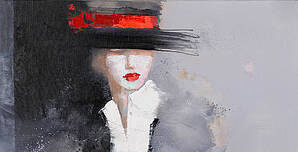Art has always been a reflection of society, capturing the essence of the human experience and serving as a mirror to our collective consciousness. From the cave paintings of prehistoric times to the avant-garde movements of the 20th century, art has continually evolved, adapting to the changing times and pushing the boundaries of creativity.
In today’s fast-paced world, the art scene is alive with innovation and experimentation, as artists continue to explore new mediums, techniques, and themes. One of the most significant trends in contemporary art is the blurring of boundaries between different art forms. Artists are no longer confined to traditional categories such as painting or sculpture but are embracing a more interdisciplinary approach, incorporating elements of performance, video, installation, and digital media into their work.
Another key development in the world of art is the increasing emphasis on social and political issues. In an era marked by global uncertainty and unrest, artists are using their platforms to address pressing issues such as climate change, social justice, and inequality. Through their work, they are challenging existing power structures, questioning established norms, and sparking crucial conversations about the state of the world.
Furthermore, technology has revolutionized the way art is created, consumed, and shared. The rise of digital art, virtual reality, and augmented reality has opened up new possibilities for artists, allowing them to create immersive experiences that transcend the traditional gallery setting. Social media platforms have also democratized the art world, enabling artists to reach a global audience and connect with like-minded creatives from around the world.
As we look to the future, it is clear that the world of art will continue to evolve and adapt to the changing landscape of society. With advancements in technology, the boundaries between the physical and virtual worlds will continue to blur, opening up new avenues for artistic expression. The rise of artificial intelligence and machine learning is also likely to have a significant impact on the art world, raising questions about authorship, creativity, and the role of the artist in an increasingly automated world.
In conclusion, the world of art is a vast and ever-evolving landscape, shaped by the intricate interplay of creativity, technology, and society. As we navigate the complexities of the 21st century, art will continue to be a beacon of inspiration, challenging us to think critically, empathize deeply, and question the status quo. The future of art is bright, filled with limitless possibilities and opportunities for growth and innovation. Let us embrace this evolving world of art with open minds and open hearts, ready to explore, create, and connect in ways we never thought possible.

